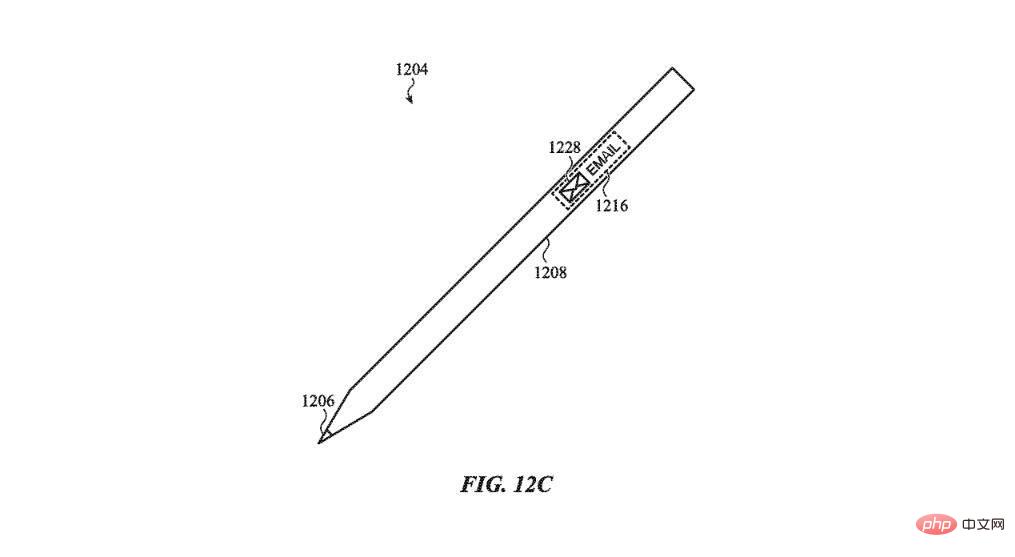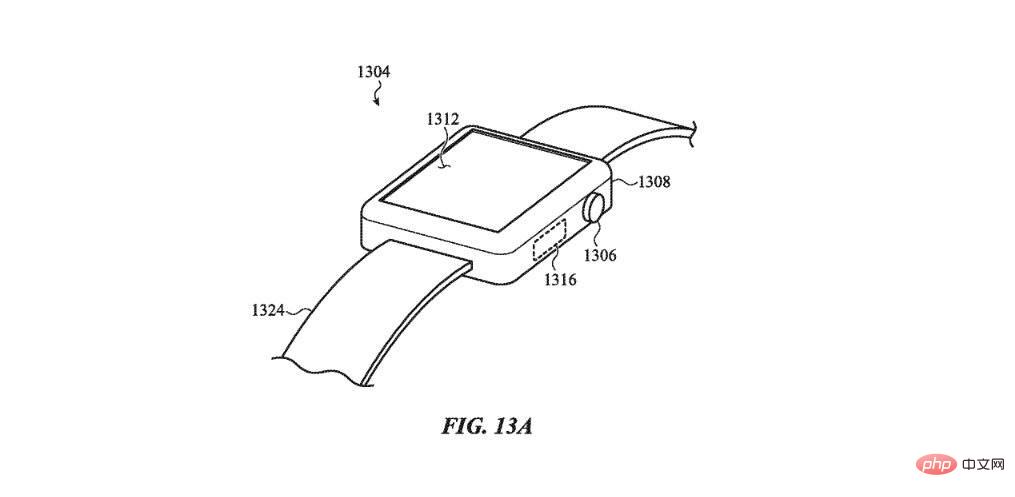Apple tech creates invisible input areas on borders to replace buttons
Apple is continuing to develop technology that could allow for nearly invisible input areas that display information to users while replacing physical buttons or controls on its products.
"Hidden Input Areas for Electronic Devices" is a newly disclosed patent application that describes technology that uses micropores to sense input.
This isn’t the first time Apple has pursued this idea. In February 2022, the U.S. Patent and Trademark Office actually granted Apple a patent of the same name for the idea.
Apple said the granted patent and new patent application focus on eliminating "large buttons, keys, or other mechanical actuation structures" used to sense device input. This is because traditional input elements "may lack flexibility or adaptability and may permanently indicate the presence of an input device."
The solution is to add an input surface outside the device that consists of a series of micropores. When active, these microholes can display virtual keys, buttons, or notification graphics to illuminate the input area.
The patent states that the input area "will be visually imperceptible when unilluminated." In other words, the goal is to make these areas invisible when not in use.
 Invisible input area on Apple Pencil.
Invisible input area on Apple Pencil. These invisible input areas can then be further configured to receive input, detect touch, or use other methods such as optical, magnetic, and capacitive-based sensors to enable device control. Apple says it can also be configured with a haptic section to simulate the tactile response of a key or button.
The input layer can also contain a translucent layer made of "glass, ceramic, plastic, or a combination thereof." Apple says this translucent layer could be "the top shell of the laptop."
While part of the patent's text describes an Apple Watch, some of the numbers in the patent describe micro-perforation technology that would work with iPhone, Apple Pencil, and MacBook devices.
 Apple can use input areas to replace the physical buttons on the Apple Watch.
Apple can use input areas to replace the physical buttons on the Apple Watch. It’s worth noting that the technology looks similar to the one on HomePod, with its top input area lighting up when Siri is activated. Apple iPhone and iPad devices also feature capacitive buttons, which provide a tactile response despite not actually being buttons.
Apple has been granted additional patents related to microhole lighting. For example, a 2012 patent describes a system that uses similar technology to create invisible device controls that light up to indicate control areas when activated.
The system can be combined with other Apple-patented technologies, such as the glass keyboard on MacBook Pro or the seamless all-glass iPhone.
Apple is awarded multiple patents every week and is filing for more. Because of this, patents are poor predictors of a company's future plans and say little about when the technology they describe may be brought to market.
The above is the detailed content of Apple tech creates invisible input areas on borders to replace buttons. For more information, please follow other related articles on the PHP Chinese website!

Hot AI Tools

Undresser.AI Undress
AI-powered app for creating realistic nude photos

AI Clothes Remover
Online AI tool for removing clothes from photos.

Undress AI Tool
Undress images for free

Clothoff.io
AI clothes remover

Video Face Swap
Swap faces in any video effortlessly with our completely free AI face swap tool!

Hot Article

Hot Tools

Notepad++7.3.1
Easy-to-use and free code editor

SublimeText3 Chinese version
Chinese version, very easy to use

Zend Studio 13.0.1
Powerful PHP integrated development environment

Dreamweaver CS6
Visual web development tools

SublimeText3 Mac version
God-level code editing software (SublimeText3)

Hot Topics
 1673
1673
 14
14
 1429
1429
 52
52
 1333
1333
 25
25
 1278
1278
 29
29
 1257
1257
 24
24
 How to solve the problem of 'Undefined array key 'sign'' error when calling Alipay EasySDK using PHP?
Mar 31, 2025 pm 11:51 PM
How to solve the problem of 'Undefined array key 'sign'' error when calling Alipay EasySDK using PHP?
Mar 31, 2025 pm 11:51 PM
Problem Description When calling Alipay EasySDK using PHP, after filling in the parameters according to the official code, an error message was reported during operation: "Undefined...
 Multi-party certification: iPhone 17 standard version will support high refresh rate! For the first time in history!
Apr 13, 2025 pm 11:15 PM
Multi-party certification: iPhone 17 standard version will support high refresh rate! For the first time in history!
Apr 13, 2025 pm 11:15 PM
Apple's iPhone 17 may usher in a major upgrade to cope with the impact of strong competitors such as Huawei and Xiaomi in China. According to the digital blogger @Digital Chat Station, the standard version of iPhone 17 is expected to be equipped with a high refresh rate screen for the first time, significantly improving the user experience. This move marks the fact that Apple has finally delegated high refresh rate technology to the standard version after five years. At present, the iPhone 16 is the only flagship phone with a 60Hz screen in the 6,000 yuan price range, and it seems a bit behind. Although the standard version of the iPhone 17 will have a high refresh rate screen, there are still differences compared to the Pro version, such as the bezel design still does not achieve the ultra-narrow bezel effect of the Pro version. What is more worth noting is that the iPhone 17 Pro series will adopt a brand new and more
 How to view XML on your phone without a network
Apr 02, 2025 pm 10:30 PM
How to view XML on your phone without a network
Apr 02, 2025 pm 10:30 PM
There are two ways to view XML files: Android phones: use file manager or third-party applications (XML Viewer, DroidEdit). iPhone: Transfer files via iCloud Drive and use the Files app or third-party app (XML Buddha, Textastic).
 How to open XML files with iPhone
Apr 02, 2025 pm 11:00 PM
How to open XML files with iPhone
Apr 02, 2025 pm 11:00 PM
There is no built-in XML viewer on iPhone, and you can use third-party applications to open XML files, such as XML Viewer, JSON Viewer. Method: 1. Download and install the XML viewer in the App Store; 2. Find the XML file on the iPhone; 3. Press and hold the XML file to select "Share"; 4. Select the installed XML viewer app; 5. The XML file will open in the app. Note: 1. Make sure the XML viewer is compatible with the iPhone iOS version; 2. Be careful about case sensitivity when entering file paths; 3. Be careful with XML documents containing external entities
 How to compatible with multi-line overflow omission on mobile terminal?
Apr 05, 2025 pm 10:36 PM
How to compatible with multi-line overflow omission on mobile terminal?
Apr 05, 2025 pm 10:36 PM
Compatibility issues of multi-row overflow on mobile terminal omitted on different devices When developing mobile applications using Vue 2.0, you often encounter the need to overflow text...
 Compilation and installation of Redis on Apple M1 chip Mac failed. How to troubleshoot PHP7.3 compilation errors?
Mar 31, 2025 pm 11:39 PM
Compilation and installation of Redis on Apple M1 chip Mac failed. How to troubleshoot PHP7.3 compilation errors?
Mar 31, 2025 pm 11:39 PM
Problems and solutions encountered when compiling and installing Redis on Apple M1 chip Mac, many users may...
 Is there any mobile app that can convert XML into PDF?
Apr 02, 2025 pm 08:54 PM
Is there any mobile app that can convert XML into PDF?
Apr 02, 2025 pm 08:54 PM
An application that converts XML directly to PDF cannot be found because they are two fundamentally different formats. XML is used to store data, while PDF is used to display documents. To complete the transformation, you can use programming languages and libraries such as Python and ReportLab to parse XML data and generate PDF documents.
 How to accurately realize the small label effect in the design draft on the mobile terminal?
Apr 04, 2025 pm 11:36 PM
How to accurately realize the small label effect in the design draft on the mobile terminal?
Apr 04, 2025 pm 11:36 PM
How to achieve the effect of small labels in the design draft on the mobile terminal? When designing mobile applications, it is common to find out how to accurately restore the small label effect in the design draft...



